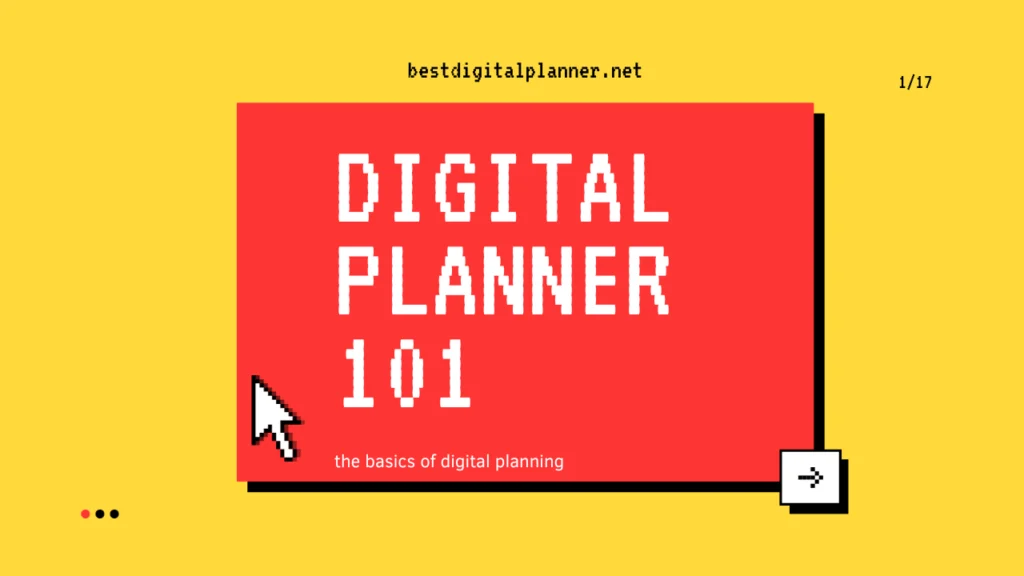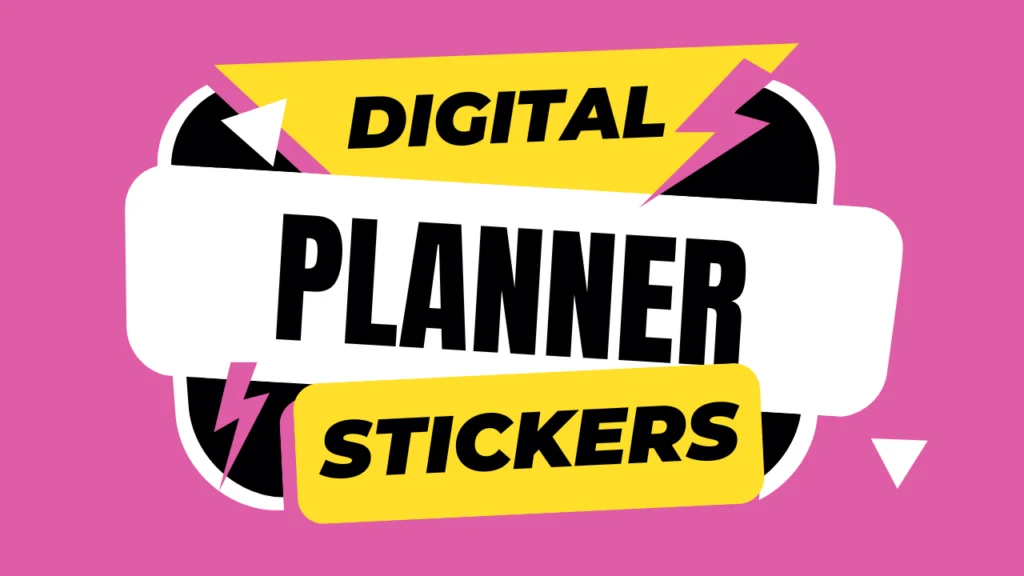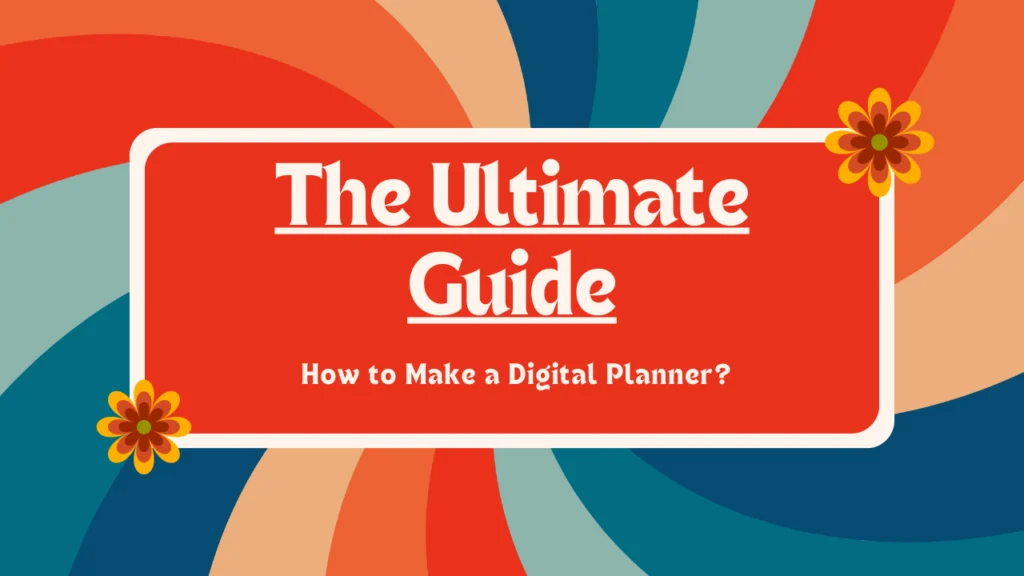
Introduction
Understanding the Digital Planning Landscape
Digital planning has revolutionized the way people manage their tasks, schedules, and goals. With the rise of technology, digital planners have become an essential tool for enhancing productivity and organization. Gone are the days of carrying around bulky paper planners; now, everything can be conveniently accessed on a smartphone, tablet or computer. In this guide, we will explore the benefits of transitioning to a digital planner, how to choose the right one, and provide a comprehensive user guide to help you make the most out of this valuable tool.
Benefits of Transitioning to a Digital Planner
The benefits of using a digital planner are numerous. One of the main advantages is the ability to have all of your information in one place. With a digital planner, you can consolidate your calendars, to-do lists, and notes, making it easier to stay organized. Another benefit is the ability to access your planner from anywhere, as long as you have your device with you. This means you can stay on top of your tasks and appointments while on the go. Digital planners also offer customizable features, allowing you to tailor your planner to your specific needs. Additionally, going digital is more eco-friendly, as it eliminates the need for paper and reduces waste.
How to Choose the Right Digital Planner
When it comes to choosing a digital planner, there are several factors to consider. First and foremost, you’ll want to determine which platform you prefer. There are mobile apps, desktop software, and online platforms available, each with its own set of features and benefits. Consider your device preferences and the level of customization you desire. It’s also important to evaluate the user interface and ease of navigation. Look for a digital planner that is intuitive and user-friendly. Lastly, take into account any additional functionalities you may require, such as collaboration tools or integration with other apps or services. With these considerations in mind, you can select the perfect digital planner to meet your needs.
Getting Started with a Digital Planner
Exploring Digital Planner Options
- Mobile Apps for Digital Planning
Mobile apps are a popular choice for digital planning due to their convenience and portability. There are numerous apps available, ranging from simple to feature-rich. Some popular options include Evernote, Todoist, and Trello. These apps offer a range of functionalities including task management, note-taking, and calendar integration. It’s important to choose an app that aligns with your specific needs and preferences.
- Desktop Software for Digital Planning
If you prefer working on a larger screen or require more robust features, desktop software may be the right choice for you. Programs like Microsoft Outlook, Google Calendar, and Todoist for Desktop provide a comprehensive set of tools for managing tasks, schedules, and projects. These programs often offer advanced features such as email integration, project management, and goal tracking.
- Online Platforms for Digital Planning
Online platforms offer the flexibility of accessing your planner from any device with internet access. Platforms like Notion, Asana, and Airtable provide a versatile workspace where you can create and organize tasks, calendars, and notes. These platforms often have collaborative features, making them ideal for teams and remote work environments.
Setting Up Your Digital Planner
- Choosing the Layout and Design
Once you’ve selected a digital planner, it’s time to set it up according to your preferences. Begin by choosing a layout and design that suits your needs and aesthetic. Many digital planners offer pre-designed templates that you can customize or you can create your own from scratch. Consider factors like the number of calendar views, task list layouts, and color schemes that appeal to you.
- Customizing Sections and Templates
To make your digital planner truly personalized, take advantage of the customization options available. Most digital planners allow you to add or remove sections based on your needs. For example, you can include sections for daily, weekly, and monthly planning, as well as sections for notes, goals, and habit tracking. Experiment with different templates and layouts to find what works best for you.
- Syncing and Integrating with Other Devices and Tools
To ensure that your digital planner is accessible across all your devices, it’s important to sync and integrate it with other tools you use. Many digital planning apps and platforms offer synchronization options, allowing you to access your planner seamlessly on your phone, tablet, and computer. Furthermore, integration with other apps and services such as Google Calendar or task management tools can streamline your workflow and make your planner even more powerful.
Familiarizing Yourself with Digital Planning Tools
- Understanding the Main Features
To make the most out of your digital planner, it’s crucial to familiarize yourself with its main features. These features may include task management, calendar integration, note-taking capabilities, and goal tracking tools. Take the time to explore and understand each feature so you can leverage them effectively in your planning process.
- Navigating the User Interface
Each digital planner has its own unique user interface, so take some time to navigate and get comfortable with it. Familiarize yourself with the different menus, icons, and buttons. Learn how to access different sections, switch between calendar views, and customize your planner. The more comfortable you are with the user interface, the more efficiently you can utilize your digital planner.
- Utilizing Essential Functions
In addition to the main features and user interface, there are essential functions that can enhance your digital planning experience. These may include drag-and-drop functionality, keyboard shortcuts, search capabilities, and task filtering options. Explore these functions and incorporate them into your planning routine to save time and increase efficiency.
Maximizing Productivity and Organization with a Digital Planner
Daily Planning and Task Management
- Creating and Organizing To-Do Lists
One of the primary purposes of a digital planner is to help you manage your tasks effectively. Take advantage of the task management features in your digital planner to create and organize your to-do lists. Break down your tasks into actionable items and categorize them based on priority, due dates, or project. This will allow you to have a clear overview of your tasks and ensure nothing falls through the cracks.
- Prioritizing Tasks and Setting Reminders
Prioritization is key to maximizing productivity. Use your digital planner to assign priorities to your tasks and set reminders for important deadlines. This will help you stay focused and ensure that you tackle the most important tasks first. Additionally, take advantage of features like notifications and alarms to keep you on track throughout the day.
- Using Digital Planner Features for Effective Time Management
Digital planners offer various tools for time management. Utilize features such as time-blocking, recurring tasks, and estimated task durations to allocate your time effectively. By scheduling specific time slots for your tasks, you can better manage your workload and avoid feeling overwhelmed. Experiment with different time management techniques to find what works best for you.
Calendar Integration and Event Scheduling
- Syncing Digital Planner with Personal and Work Calendars
Calendar integration is a powerful feature of digital planners. Sync your personal and work calendars with your digital planner to have a comprehensive view of your schedule. This integration allows you to avoid double bookings and helps you plan your tasks and appointments more effectively.
- Adding and Managing Events and Appointments
With a digital planner, adding and managing events and appointments is a breeze. Simply input the details of the event, including time, location, and any additional notes or attachments. Many digital planners also offer features like color-coding and recurring events, making it easier to visualize and manage your schedule.
- Utilizing Reminder Systems and Notifications
Digital planners often come equipped with reminder systems and notifications. Take advantage of these features to ensure you don’t miss important appointments or deadlines. Set reminders for upcoming events, tasks, or meetings to stay on top of your schedule. Adjust the settings to receive notifications via email, push notifications, or both, depending on your preferences.
Note-taking and Journaling with a Digital Planner
- Writing and Organizing Digital Notes
A digital planner is not only for managing tasks and events; it can also serve as a platform for note-taking and journaling. Use the note-taking capabilities of your digital planner to jot down ideas, meeting notes, or personal reflections. Organize your notes by creating different sections or tags, making it easy to retrieve information when needed.
- Incorporating Multimedia Elements
Digital planners offer the advantage of incorporating multimedia elements into your notes. Attach images, videos, audio recordings, or files directly into your digital planner to enhance your notes and make them more engaging. This feature is particularly useful for visual learners or for individuals who want to capture and preserve important moments.
- Utilizing Search and Tagging Functions for Easy Retrieval
Digital planners often include search and tagging functions to facilitate easy retrieval of information. When taking notes or journaling, make use of tags or labels to categorize your entries. This will allow you to quickly locate specific notes or topics. Additionally, make use of the search function to find specific keywords or phrases within your digital planner, saving you time and effort.
Making the Most of Collaborative Features
Sharing and Collaborating with Others
- Inviting and Managing Collaborators
Many digital planners offer collaborative features that allow you to share your planner with others. Invite team members, colleagues, or friends to collaborate on projects or share calendars. Take advantage of permissions settings to control the level of access each collaborator has. This enhances communication and fosters teamwork, allowing you to work together efficiently.
- Assigning Tasks and Tracking Progress
In a collaborative setting, task assignment and progress tracking are essential. Use your digital planner to assign tasks to specific collaborators and track their progress. Utilize features like task comments, attachments, and due dates to facilitate collaboration and keep everyone on the same page. Regularly review progress and provide feedback to ensure the successful completion of projects.
- Communication and Collaboration Tools within the Digital Planner
Some digital planners offer built-in communication and collaboration tools to streamline workflow. These tools include features like chat functions, file sharing capabilities, and real-time collaboration. Embrace these tools to facilitate seamless communication, quick decision-making, and efficient collaboration within your digital planner.
Project Management and Goal Tracking
- Breaking Down Projects and Setting Milestones
Digital planners are excellent tools for project management and tracking goals. Break down large projects into smaller, manageable tasks and set milestones to measure progress. Assign deadlines and dependencies to ensure that tasks are completed in a logical sequence. By utilizing your digital planner’s project management features, you can keep projects on track and achieve your goals efficiently.
- Monitoring Progress and Keeping Track of Deadlines
Regularly monitor the progress of your projects and track deadlines using your digital planner. With features like progress bars or Kanban boards, you can visualize the status of each task and identify any bottlenecks or delays. Set specific deadlines for individual tasks and use notifications or reminders to stay accountable and meet your goals.
- Implementing Goal Tracking Techniques for Increased Accountability
Goal tracking is a powerful motivator when it comes to achieving your objectives. Leverage the goal tracking features of your digital planner to set measurable goals and monitor your progress. Whether you’re aiming to complete a certain number of tasks or develop a new skill, these features will help you stay focused and accountable. Regularly review your goals and make adjustments as needed to stay on the path to success.
Streamlining Workflows with Automation
- Automating Repetitive Tasks and Reminders
Automation is a time-saving feature that can significantly enhance your productivity. Look for automation options in your digital planner to streamline repetitive tasks and reminders. For example, you can set up recurring tasks or create templates to save time when adding similar items to your planner. By automating these mundane tasks, you can focus your energy on more important and meaningful work.
- Integrating Digital Planner with Productivity Tools and Services
To further optimize your workflow, integrate your digital planner with other productivity tools and services. Many digital planners offer integrations with popular apps like Slack, Google Drive, or project management tools. Syncing these tools with your digital planner allows for seamless information flow and reduces the need to switch between multiple applications.
- Optimizing Workflows for Enhanced Efficiency
Take the time to review your workflow and identify areas where you can improve efficiency. Experiment with different features and functionalities in your digital planner to find what works best for you. Look for ways to eliminate unnecessary steps or automate repetitive tasks. Continuously evaluate and refine your workflow to optimize your productivity and minimize distractions.
Conclusion
In conclusion, transitioning to a digital planner offers a multitude of benefits, from enhanced organization to streamlined collaboration. The key lies in choosing the right platform, customizing it to your preferences, and fully exploring its features. With effective daily planning, collaborative tools, and integrations, a digital planner becomes a dynamic ally in boosting productivity and achieving goals. Embrace the possibilities, optimize your workflow, and enjoy a more efficient and organized life with the help of your digital planner.

